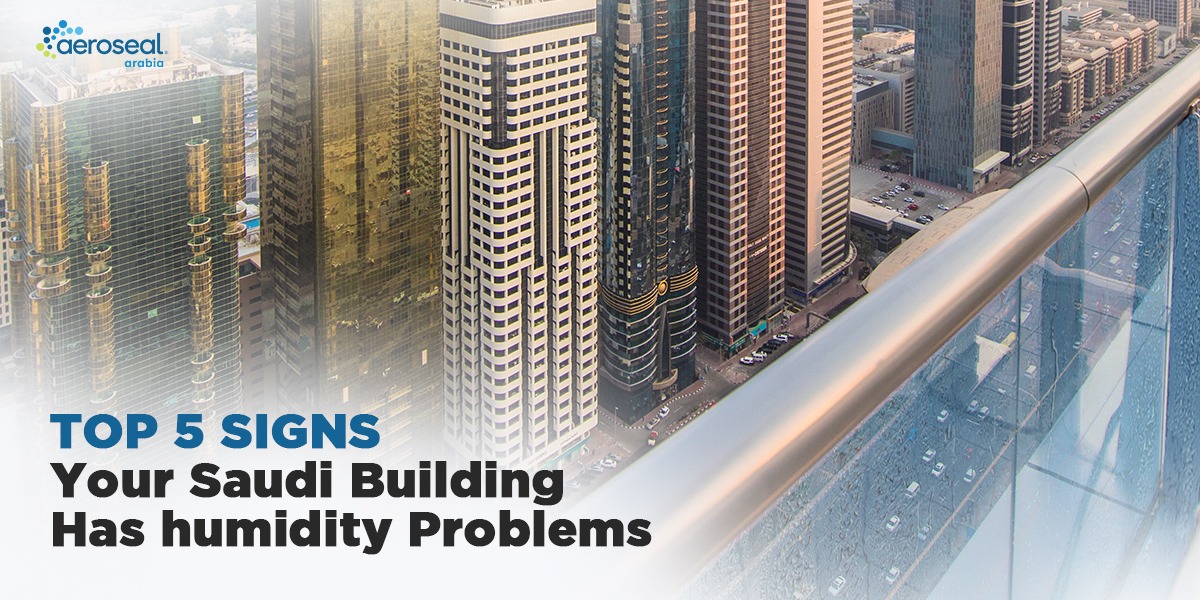
Top 5 Signs Your Saudi Building Has Humidity Problems
Humidity might seem harmless, but it can quietly damage your building, reduce comfort, and increase maintenance costs. In Saudi Arabia’s warm and often humid climate, it is especially important to control indoor air conditions. Ignoring early signs can lead to mold, corrosion, and health issues that are costly to fix later.
1. Condensation on Windows or Walls
If you often see water droplets on windows or notice damp marks on walls, it means your indoor humidity is too high. This happens when warm air meets a cool surface, forming condensation. Over time, moisture can cause paint to peel, wood to warp, and mold to grow behind walls. In Saudi buildings with strong air conditioning, this is a common problem even when the air feels cool.
2. Musty Odors or Mold Growth
A musty smell is usually the first sign of hidden mold. Mold loves humid spaces such as behind tiles, inside air ducts, or under ceilings. It damages materials and releases spores that can cause allergies and breathing problems. In hospitals, offices, or residential buildings, mold affects both comfort and air quality, making humidity control essential.
3. Uneven Indoor Temperatures
If some rooms feel cooler or more humid than others, there may be leaks in the air ducts or poor insulation in certain areas. When humid air enters through cracks, it creates uncomfortable temperature differences. A properly sealed building keeps humidity balanced and ensures consistent temperatures throughout, improving comfort and efficiency.
4. Rising Energy Bills
When humidity rises, your air conditioning system has to work harder to remove moisture and keep the building cool. This extra effort increases electricity costs. Studies show that excessive humidity can raise cooling energy use by as much as 30 percent. Sealing air leaks helps reduce this waste and extends the life of your HVAC system.
5. Peeling Paint, Rust, or Wall Damage
Humidity doesn’t only stay in the air. It also seeps into walls, ceilings, and metal components, weakening them over time. You might notice bubbling paint, cracked plaster, or rust forming near vents and corners. These are clear warnings that moisture is penetrating the structure. Acting quickly can prevent costly damage and preserve your building’s condition.
How to Solve Humidity Problems in Saudi Buildings
The most effective way to control humidity is through proper air sealing. Modern solutions such as Aeroseal can seal invisible leaks inside ducts and walls without the need for major construction work. This keeps humid air outside, stabilizes indoor conditions, and improves energy performance.
Regular HVAC maintenance and humidity monitoring also play a big role. Together, these steps help maintain a cleaner, healthier, and more efficient building all year long.
Conclusion
Humidity issues can start small but quickly grow into major problems. From higher energy bills to mold and wall damage, the warning signs are easy to overlook. By identifying them early and sealing your building properly, you protect your investment and ensure a comfortable, healthy environment.
In Saudi Arabia’s demanding climate, humidity control is not just about comfort. It is about protecting your property, your equipment, and the people who depend on your building every day.



